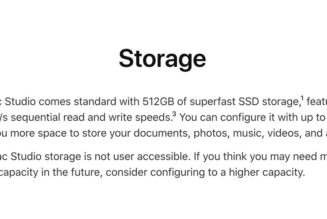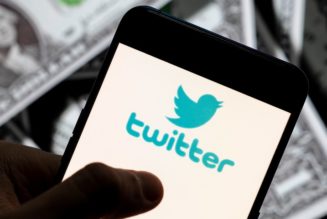
Something my mom said about the recent streaming landscape stuck with me while watching a three-hour event for Paramount Plus.
“I’m sometimes searching on Netflix, Amazon Prime Video, [and] HBO when I’m bored, and I often am, and I still can’t figure out what I want to watch,” she said. “Maybe too much choice isn’t always good!”
Companies like ViacomCBS, Disney, Apple, Amazon, NBCUniversal, WarnerMedia, and even Fox would say otherwise. They’re in the midst of pivoting to a streaming-first or streaming-focused strategy, figuring out their way into the world with individual platforms — many of which come with a plus sign at the end. More, the plus sign signals; more, more, more. Paramount Plus is just the latest, and arguably the last, big entry in the space. Has it finally hit the point where there’s too much choice?
During its event, ViacomCBS executives announced more than 50 new projects, a combination of shows, documentaries, films, and specials for Paramount Plus. The titles hail from Nickelodeon, MTV, BET, Showtime, Comedy Central, and others, and all are supposed to get people excited enough to sign up. Over the next four years, ViacomCBS is increasing its spending on streaming to $5 billion and hoping to bring in 65 to 75 million subscribers around the world. The service launches on March 4th for $9.99 a month. A cheaper, ad-supported option will be available in June for $4.99.
Executives are hopeful that Paramount Plus has the potential to become a major revenue source. The potential for Paramount Plus to reach incredible heights, the potential for it to generate a meaningful profit for ViacomCBS, is everything. There’s a glaring problem with potential equations, with trying to evaluate just how much someone will want to switch over from Netflix or Disney Plus to Paramount Plus — what if the opposite happens and the potential to lose out actually happens instead?
Realistically, most of these streaming platforms don’t need to exist. To go one step further, a few seem to exist solely to appease internal pressures and demands in the middle of a rapidly accelerating and changing entertainment industry. Companies feel like they have to own the content, and distribution paths, in order to keep their heads above water. In order for a streaming service to really work, it needs to accomplish a few things, but it all boils down to one core idea: it has to fulfill a need. Or, a streaming service has to be a nonnegotiable purchase. People feel like they can’t sacrifice not having it. Two primary examples are Netflix and Disney Plus.
Netflix, benefitting by being first and adapting extraordinarily fast when needed, has made it nearly impossible to leave. For $14 a month, there’s a new highly talked-about movie or TV show every week, and a large library to keep people watching. Netflix executives have hedged their licensing bets to keep shows they don’t own but people really want to watch. This prevents them from canceling. Those they can’t keep are likely easy to replicate.
Think of Netflix’s reality and unscripted TV plan, which bears similarities to MTV, Bravo, and Discovery. Like Real Housewives or Vanderpump Rules? Netflix has Bling Empire, Selling Sunset, and The Real Lives of Bollywood Wives. As co-CEO Ted Sarandos said on a recent earnings call, Netflix wants to be the place “where [people] come to us for their favorite show.”
On the flip side, there’s Disney Plus, closing in on 100 million subscribers within 14 months of its initial launch. (To put this in perspective, by 2024, ViacomCBS expects to have 65-75 million subscribers across its streaming platforms globally; in the same time frame, Disney is estimating between 300 and 350 million for its services.) Disney’s entire strategy is laid out in every single advertisement: it’s Disney, it’s Pixar, it’s Marvel, it’s Star Wars, it’s National Geographic. This is Disney and Disney is this, and it’s only on Disney Plus.
Brand identity is everything. People know they have to sign up for Disney Plus to watch Marvel movies or shows, while Marvel and Star Wars stay on top of the conversation through weekly releases of highly anticipated shows that dominate conversation. Paramount Plus has brand power, but it’s not as instantly recognizable. During the event, certain shows were highlighted as reasons to get Paramount Plus. A new iCarly, new Avatar: The Last Airbender or Legend of Korra, new Criminal Minds. All these shows are available to stream on Netflix, where they’ve found a big audience, but it’s unclear how many people associate those series with ViacomCBS or how many people will sign up for Paramount Plus to watch those same series.
Launching a streaming service may solve an issue for a company, but asking customers to sign up for another platform and pay for another app — especially when they’re used to having things on Netflix — isn’t consumer friendly. Some folks may begrudgingly say, “Fine, I’ll sign up for Paramount Plus for Criminal Minds,” but unless there’s a weekly reason to justify that purchase, and leave people feeling excited about it, the process feels like a chore. Other people may decide they can live without Criminal Minds — perhaps make a one-time purchase on iTunes or Amazon — and stick to the medley of streaming services they already use.
There’s a very good chance Paramount Plus could work. It has one of the biggest libraries of all the streaming services. There’s a live aspect to it combining sports and news. Movies like Mission: Impossible 7 and A Quiet Place 2 will debut on Paramount Plus just 45 days after they’re in theaters. Keep throwing things at the wall, and eventually one of the new shows will likely become something people want to watch and therefore finally sign up for Paramount Plus.
At the same time, in an era of way, way too much TV, where things get lost on Netflix and Hulu all the time, moving things to Paramount Plus isn’t going to help. Emily in Paris is a Paramount show that was sold to Netflix. On Netflix, it found an audience, but would it have found the same audience on Paramount Plus, where there’s 10 percent of the audience base? Things often pop on Netflix simply because they’re on Netflix. It’s easier for 200 million subscribers to turn something into a cultural hit than 19 million.
The biggest problem Paramount Plus will face is answering why someone needs it. HBO Max and Peacock are facing similar hurdles. Netflix has proven why people need it, and so has Disney Plus. People could argue that customers didn’t need a Disney Plus, but the company offered new series and old favorites on a platform designed around child safety, with no chance of a kid stumbling upon an R-rated movie. That fulfills a need for parents.
Paramount Plus may contain an impressive library and may be home to some of the biggest TV networks and studios in the world, but it doesn’t fix a problem, it creates one. Shows and movies used to be on Netflix, a ubiquitous streaming service. Now they’re not. Not everyone has to be a distributor and a content producer. Over time, we’ll start to see companies realize that more and more.
Last night, I went to bed watching iCarly on Netflix, a show I loved as a kid but forgot about over time. If, and when, it eventually leaves Netflix, I’m not going to seek it out somewhere else. I’ll just find something else on Netflix.










